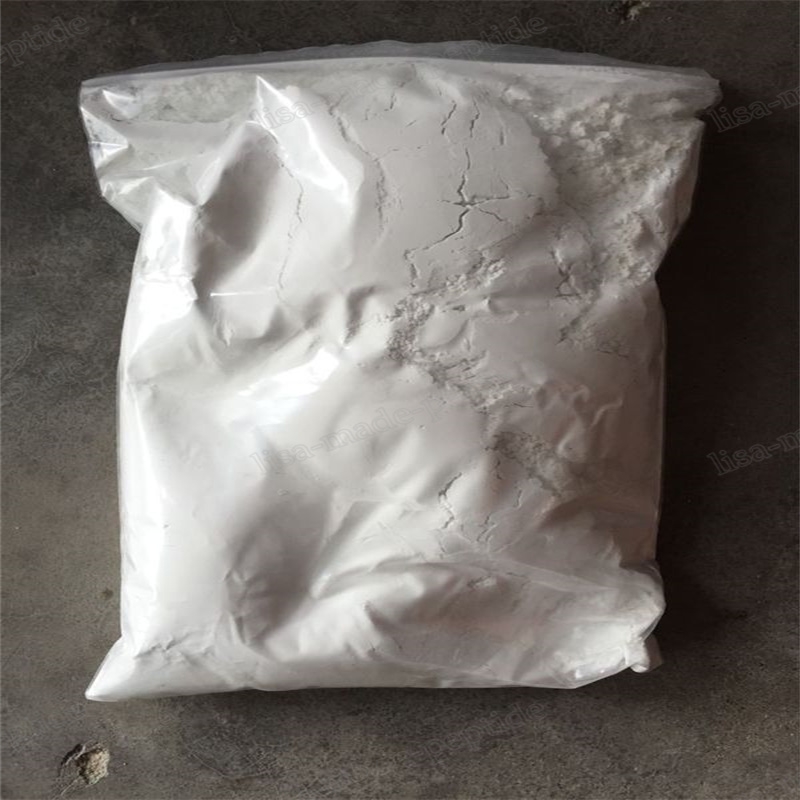-
Categories
-
Pharmaceutical Intermediates
-
Active Pharmaceutical Ingredients
-
Food Additives
- Industrial Coatings
- Agrochemicals
- Dyes and Pigments
- Surfactant
- Flavors and Fragrances
- Chemical Reagents
- Catalyst and Auxiliary
- Natural Products
- Inorganic Chemistry
-
Organic Chemistry
-
Biochemical Engineering
- Analytical Chemistry
-
Cosmetic Ingredient
- Water Treatment Chemical
-
Pharmaceutical Intermediates
Promotion
ECHEMI Mall
Wholesale
Weekly Price
Exhibition
News
-
Trade Service
[ Focus on Chemical Machinery and Equipment Network ] In recent years, as the popularity of domestic tomb robbery suspense web dramas has continued to rise, "Tomb Raiders Notes" and "Ghost Blowing Lantern" series of film and television dramas with the themes of tomb robbers have become the "sweet pastry" in the entertainment industry.
".
Through these ups and downs of the story, the content of which is constantly thrilling, we have a preliminary understanding of the mysterious industry of archaeology.
In the play, the actors show off their skills and use various tomb-robbing equipment to go deep into the cemetery and excavate the thousand-year-old tomb.
The plot is particularly shocking.
Chemical machinery and equipment network hotspots pay attention to chemical machinery and equipment".
Through these ups and downs of the story, the content of which is constantly thrilling, we have a preliminary understanding of the mysterious industry of archaeology.
In the play, the actors show off their skills and use various tomb-robbing equipment to go deep into the cemetery and excavate the thousand-year-old tomb.
The plot is particularly shocking.
However, film and television dramas are ultimately only an exaggerated reflection of real life.
Actual archaeological exploration work is not only time-consuming and labor-intensive, but also requires professional archaeologists to work with various * instruments and equipment.
Although actual archaeological exploration will not involve encounters with monsters and monsters, the difficulty is by no means as simple as digging three feet in the ground as we imagined.
Actual archaeological exploration work is not only time-consuming and labor-intensive, but also requires professional archaeologists to work with various * instruments and equipment.
Although actual archaeological exploration will not involve encounters with monsters and monsters, the difficulty is by no means as simple as digging three feet in the ground as we imagined.
Taking advantage of the holidays, the editor had the honor to visit the Kuahuqiao Site Museum.
Located on the basement level of the museum, the original site of the Lake Crossing Bridge, which has been dusted for thousands of years, has finally unveiled its mystery under the excavation and exploration of the archaeological team.
Through numerous scientific and technological means, we living in the 21st century can glimpse the living conditions of the original residents of Kuahuqiao in the Neolithic Age 8,000 years ago.
In this regard, the editor will take stock of the *techniques used in archaeological work.
Located on the basement level of the museum, the original site of the Lake Crossing Bridge, which has been dusted for thousands of years, has finally unveiled its mystery under the excavation and exploration of the archaeological team.
Through numerous scientific and technological means, we living in the 21st century can glimpse the living conditions of the original residents of Kuahuqiao in the Neolithic Age 8,000 years ago.
In this regard, the editor will take stock of the *techniques used in archaeological work.
Geophysical prospecting and chemical analysis technology
Geophysical prospecting and chemical analysis technology * Ancient ruins are usually buried deep underground.
How to accurately find the specific location of the ruins, the scale and appearance of the ruins, and determine the starting point of the excavation is a major problem before the archaeological excavation work is officially launched.
To this end, researchers usually need to resort to geophysical exploration technology and geochemical analysis technology.
The geophysical exploration technology used in archaeology mainly includes magnetic exploration technology, resistivity exploration technology, ground transmission radar, ground electrical CT technology, etc.
; geochemical analysis technology mainly includes phosphate determination, mercury vapor content determination, etc.
These* detection and analysis technologies can help archaeologists determine the approximate scope of ancient ruins, the thickness of soil layers and the appearance of the ruins.
How to accurately find the specific location of the ruins, the scale and appearance of the ruins, and determine the starting point of the excavation is a major problem before the archaeological excavation work is officially launched.
To this end, researchers usually need to resort to geophysical exploration technology and geochemical analysis technology.
The geophysical exploration technology used in archaeology mainly includes magnetic exploration technology, resistivity exploration technology, ground transmission radar, ground electrical CT technology, etc.
; geochemical analysis technology mainly includes phosphate determination, mercury vapor content determination, etc.
These* detection and analysis technologies can help archaeologists determine the approximate scope of ancient ruins, the thickness of soil layers and the appearance of the ruins.
X-ray computed tomography technology
X-ray computed tomography technology In formal archaeological excavations, many cultural relics were buried in the soil or weathered over the years, and their specific material forms have been difficult to distinguish with the naked eye, especially ancient objects such as fossils and amber.
In order to *recognize these precious "historical materials" thousands of years ago, even *ten thousand years ago, and obtain their complete data form, it is necessary to resort to X-ray computed tomography technology.
This technology can form three-dimensional images through tomographic scanning without damaging cultural relics to form a three-dimensional image, which is convenient for observation.
In order to *recognize these precious "historical materials" thousands of years ago, even *ten thousand years ago, and obtain their complete data form, it is necessary to resort to X-ray computed tomography technology.
This technology can form three-dimensional images through tomographic scanning without damaging cultural relics to form a three-dimensional image, which is convenient for observation.
Carbon-14 dating technology
Carbon-14 dating technology In addition to the excavation of cultural relics, the study of historical ages of cultural relics is also an important part of archaeological work.
For ordinary people, it is incredible to know the exact year of the ancient cultural relics just by observing them.
However, the development level of science and technology in the 21st century may have already exceeded our cognition.
For ordinary people, it is incredible to know the exact year of the ancient cultural relics just by observing them.
However, the development level of science and technology in the 21st century may have already exceeded our cognition.
The dating of the Kuahuqiao site visited by the editor mainly relies on the carbon-14 dating technology.
It is understood that the carbon-14 dating method is also called the radiocarbon dating method.
Its basic principle is to calculate the age of the sample based on the decay rate of carbon-14 atoms in the sample.
As a radioactive element, carbon-14 exists in various life forms in nature in a balanced manner.
Once the life forms die, carbon-14 will decrease due to decay.
Therefore, the radioactivity level of carbon-14 stored in archaeological samples is compared with Compared with its original radioactivity level, the age of death can be calculated.
It is understood that the carbon-14 dating method is also called the radiocarbon dating method.
Its basic principle is to calculate the age of the sample based on the decay rate of carbon-14 atoms in the sample.
As a radioactive element, carbon-14 exists in various life forms in nature in a balanced manner.
Once the life forms die, carbon-14 will decrease due to decay.
Therefore, the radioactivity level of carbon-14 stored in archaeological samples is compared with Compared with its original radioactivity level, the age of death can be calculated.
Of course, in addition to the above-mentioned archaeological techniques, metal detectors, electron microscopes, three-dimensional laser scanners, carbon-14 accelerated mass spectrometry systems, remote sensing instruments, Raman spectrometers and many other instruments and equipment are also playing an irreplaceable role in the process of archaeological exploration.
Important role.
Important role.
The wheel of history is still advancing slowly, and the ancient historical relics buried deep in the ground silently tell us the humanistic scenery thousands of years ago.
Although we living in the 21st century cannot travel through time and space to return to the past and witness the development and evolution of history with our own eyes, we can transcend the limitations of time and space, restore history with the help of science and technology, connect historical fragments, and form a grand history of human civilization development.
.
This is the progress of science and technology, but also the progress of human civilization.
Although we living in the 21st century cannot travel through time and space to return to the past and witness the development and evolution of history with our own eyes, we can transcend the limitations of time and space, restore history with the help of science and technology, connect historical fragments, and form a grand history of human civilization development.
.
This is the progress of science and technology, but also the progress of human civilization.
Original title: The exchange of science and history collides those *techniques in archaeology







